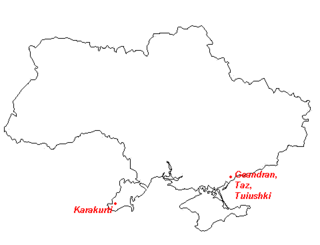 W
WThe Albanians in Ukraine are an ethnic minority group located mainly in Zaporizhzhia Oblast and Budjak. They descend from Albanian warriors who fought against the Ottoman Empire in the Russo-Turkish wars and were allowed to settle in the Russian Empire in the 18th century.
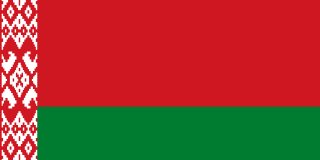 W
WBelarusians in Ukraine is the second biggest minority after Russians. Unlike many other ethnic groups, Belarusians do not have any particular concentration in the country, but spread out more-less evenly across all regions.
 W
WThe Bessarabian Bulgarians are a Bulgarian minority group of the historical region of Bessarabia, inhabiting parts of present-day Ukraine and Moldova.
 W
WThe Black Sea Germans are ethnic Germans who left their homelands starting in the late 18th century, but mainly in the early 19th century at the behest of Emperor Alexander I of Russia, and settled in territories off the north coast of the Black Sea, mostly in the territories of the southern Russian Empire.
 W
WThe Boykos, or simply Highlanders, are an ethnolinguistic group located in the Carpathian Mountains of Ukraine, Slovakia, Hungary, and Poland. Along with the neighboring Lemkos and Hutsuls, the Boykos are a sub-group of Ukrainians and speak a dialect of Ukrainian language. Within Ukraine and according to majority of linguists, the Boykos and other Rusyns are seen as a sub-group of ethnic Ukrainians, and the Rusyn lect is regarded as part of a dialect continuum within Ukrainian. Boykos differ from their neighbors in dialect, dress, folk architecture, and customs.
 W
WBulgarians are a nation and South Slavic ethnic group native to Bulgaria and its neighbouring region.
 W
WBulgarians in Ukraine make up the fifth biggest minority in the country and primarily reside in southern Ukraine. Bulgarians make up a significant minority of the Odessa Oblast, especially the city of Bolhrad.
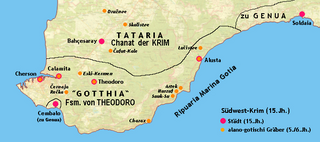 W
WCrimean Goths were Greuthungi-Gothic tribes who remained in the lands around the Black Sea, especially in Crimea. They were the least-impactful on the fate of Europe and the longest-lasting of the Gothic communities. Their existence is well attested through the ages though the exact period when they ceased to exist as a distinct culture is unknown; as with the Goths in general, they may have been diffused with the surrounding peoples. In the Fourth Turkish letter by Ogier Ghiselin de Busbecq, they are described as "a warlike people, who to this day inhabit many villages" though in the 5th century, Theodoric the Great failed to rouse Crimean Goths to support his war in Italy. At the time, it was customary to refer to a wide range of Germanic tribes as "Goths", so the exact ethnic origin of the Germanic peoples in Crimea is a subject of debate.
 W
WCrimean Tatars or Crimeans, are Turkic ethnic group and nation, who are an indigenous people of Crimea. The formation and ethnogenesis of Crimean Tatars occurred during the 13th–17th centuries, from Cumans that appeared in Crimea in the 10th century, with strong contributions from all the peoples who ever inhabited Crimea, including Greeks, Italians and Goths.
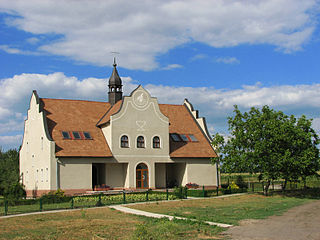 W
WCzechs in Ukraine, often known as Volhynian Czechs, are ethnic Czechs or their descendants settled mostly in the Volhynia region of Ukraine, in the second half of the 19th century.
 W
WThe Gagauz are a Turkic people living mostly in southern Moldova and southwestern Ukraine (Budjak). Gagauz are mostly Eastern Orthodox Christians.
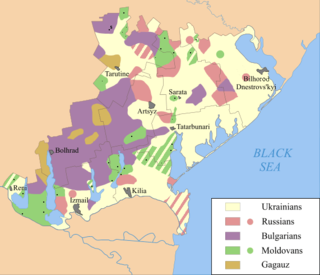 W
WThe Gagauz are an ethnic minority in Ukraine. The total number of the Gagauz diaspora was 31,923 counted in the 2001 census, most of whom (86.51%) live in the Bessarabian region of Odesa Oblast: Izmail, Reni, Kiliya, and Bolhrad raions (districts).
 W
WEthnic Georgians in Ukraine number around 34,199.
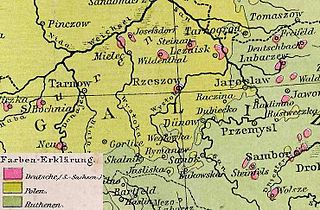 W
WThe Galician Germans were ethnic German population living in the Kingdom of Galicia and Lodomeria in the Austrian Empire, established in 1772 as a result of the First Partition of Poland, and after World War I in the four voivodeships of interwar Poland: Kraków, Lwów, Tarnopol, and Stanisławów. During the World War II part of the Galician Germans was moved out in January 1940 in the course of Heim ins Reich, the majority of the rest of them fled later in the years 1944–1945.
 W
WGreeks in Ukraine or Crimean Greeks are a Hellenic minority that reside in or used to live on the territory of modern Ukraine. Most of them live in Donetsk Oblast and particularly concentrated around the city of Mariupol.
 W
WThe history of the Jews in Ukraine goes back over a thousand years. Jewish communities have existed in the territory of Ukraine from the time of the Kievan Rus' and developed many of the most distinctive modern Jewish theological and cultural traditions, such as Hasidism. According to the World Jewish Congress, the Jewish community in Ukraine constitutes the third-largest Jewish community in Europe and the fifth-largest in the world.
 W
WHungarians, also known as Magyars, are a nation and ethnic group native to Hungary and historical Hungarian lands who share a common ancestry, culture, history and language. The Hungarian language belongs to the Uralic language family. There are an estimated 14.2–14.5 million ethnic Hungarians and their descendants worldwide, of whom 9.6 million live in today's Hungary. About 2.2 million Hungarians live in areas that were part of the Kingdom of Hungary before the Treaty of Trianon in 1920 and are now parts of Hungary's seven neighbouring countries, Slovakia, Ukraine, Romania, Serbia, Croatia, Slovenia, and Austria. Significant groups of people with Hungarian ancestry live in various other parts of the world, most of them in the United States, Canada, Germany, France, the United Kingdom, Brazil, Australia and Argentina.
 W
WThe Hungarians in Ukraine number 156,600 people according to the Ukrainian census of 2001 and are the fifth largest national minority in the country. They are the seventh biggest Hungarian diaspora in the world. Hungarians are largely concentrated in the Zakarpattia Oblast where they form the largest minority at 12.1% of the population. In the area along the Ukrainian border with Hungary, Hungarians form the majority.
 W
WThe Hutsuls are an ethnic group spanning parts of western Ukraine and Romania. They have often been officially and administratively designated as a subgroup of Ukrainians and are largely regarded as constituting a broader Ukrainian ethnos.
 W
WThe Kipchaks, also known as Kipchak Turks, Qipchaq or Polovtsians, were a Turkic nomadic people and confederation that existed in the Middle Ages, inhabiting parts of the Eurasian Steppe. First mentioned in the 8th century as part of the Second Turkic Khaganate, they most likely inhabited the Altai region from where they expanded over the following centuries, first as part of the Kimek Khanate and later as part of a confederation with the Cumans. There were groups of Kipchaks in the Pontic–Caspian steppe, Syr Darya and Siberia. The Cuman–Kipchak confederation was conquered by the Mongols in the early 13th century.
 W
WKuban Cossacks, or Kubanians, are Cossacks who live in the Kuban region of Russia. Most of the Kuban Cossacks are descendants of different major groups of Cossacks who were re-settled to the western Northern Caucasus in the late 18th century. The western part of the host was settled by the Black Sea Cossack Host who were originally the Zaporozhian Cossacks of Ukraine, from 1792. The eastern and southeastern part of the host was previously administered by the Khopyour and Kuban regiments of the Caucasus Line Cossack Host and Don Cossacks, who were re-settled from the Don from 1777.
 W
WThe Kurds in Ukraine form a part of the historically significant Kurdish population in the post-Soviet space, and are located mainly in the southern and eastern parts of the country. They descend from migrants and refugees from the Caucasus and have had a presence in Ukraine since the early 20th century.
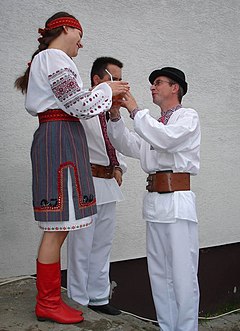 W
WLemkos are an ethnic group inhabiting a region known as Lemkivshchyna in Carpathian Ruthenia, an ethnographic region of the Carpathian Mountains and Foothills spanning Ukraine, Slovakia and Poland.
 W
WThe Lipovans or Lippovans are ethnic Russian Old Believers living in Romania, Ukraine, Moldova and Bulgaria who settled in the Principality of Moldavia, in the east of the Principality of Wallachia (Muntenia), and in the regions of Dobruja and Budjak during the 17th and 18th centuries. According to the 2011 Romanian census, there are a total of 23,487 Lipovans in Romania, mostly living in Northern Dobruja, in the Tulcea County but also in the Constanța County, and in the cities of Iași, Brăila and Bucharest. In Bulgaria, they inhabit two villages: Kazashko and Tataritsa.
 W
WMoldovans, sometimes referred as Moldavians, are the largest ethnic group of the Republic of Moldova and a significant minority in Ukraine and Russia.
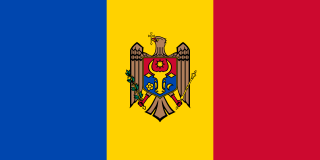 W
WMoldovans in Ukraine are the third biggest minority recorded in the 2001 All Ukrainian Census after Russians and Belarusians. Unlike many other minorities, Moldovans often live in the countryside (71.5%) rather than in a city (28.5%), the majority in the northern and southern historical region of Bessarabia.
 W
WPannonian Rusyn, formerly also known as Yugoslav Rusyn, is a variety of the Rusyn language, spoken by the Pannonian Rusyns, primarily in the regions of Vojvodina and Slavonia, and also in Pannonian Rusyn diaspora in the USA and Canada. Since Rusyns are officially recognized as a national minority both in Serbia and Croatia, their language is also recognized as a minority language, and in the Autonomous Province of Vojvodina (Serbia) it is employed as one of six official provincial languages.
 W
WPodolyans is one of Ukrainian ethnographic groups given to the people who populated the region of Podolia.
 W
WThe Polans, also Polianians, were an East Slavic tribe between the 6th and the 9th century, which inhabited both sides of the Dnieper river from Liubech to Rodnia and also down the lower streams of the rivers Ros', Sula, Stuhna, Teteriv, Irpin', Desna and Pripyat. In the Early Middle Ages there were two separate Slavic tribes bearing the name of Polans, the other being the western Polans, a West Slavic tribe.
 W
WThe Polish minority in Ukraine officially numbers about 144,130, of whom 21,094 (14.6%) speak Polish as their first language. The history of Polish settlement in current territory of Ukraine dates back to 1030–31. In Late Middle Ages, following the extinction of the Rurikid dynasty in 1323, the Kingdom of Poland extended east in 1340 to include the lands of Przemyśl and in 1366, Kamianets-Podilskyi. The settlement of Poles became common there after the Polish–Lithuanian peace treaty signed in 1366 between Casimir III the Great of Poland, and Liubartas of Lithuania.
 W
WPoleshuks are the people who populate the swamps of Polesia. Poleshuk's dialect, the Polesian language, is close to the Ukrainian, Rusyn, and Belarusian languages; it maintains many local peculiarities of other languages and dialects of the area.
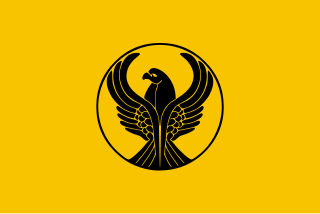 W
WThe Pontic Greeks are an ethnically Greek group who traditionally lived in the region of Pontus, on the shores of the Black Sea and in the Pontic Mountains of northeastern Anatolia. Many later migrated to other parts of Eastern Anatolia, to the former Russian province of Kars Oblast in the Transcaucasus, and to Georgia in various waves between the Ottoman conquest of the Empire of Trebizond in 1461 and the Russo-Turkish War of 1828-1829. Those from southern Russia, Ukraine, and Crimea are often referred to as "Northern Pontic [Greeks]", in contrast to those from "South Pontus", which strictly speaking is Pontus proper. Those from Georgia, northeastern Anatolia, and the former Russian Caucasus are in contemporary Greek academic circles often referred to as "Eastern Pontic [Greeks]" or as Caucasian Greeks, but also include the Turkic-speaking Urums.
 W
WPrykarpattia is a Ukrainian term for Ciscarpathia, a physical geographical region for the northeastern Carpathian foothills.
 W
WThe Romanians are a Romance ethnic group and nation native to Romania and Moldova, that share a common Romanian culture, ancestry, and speak the Romanian language, the most widespread spoken Balkan Romance language, which is descended from the Latin language. According to the 2011 Romanian census, just under 89% of Romania's citizens identified themselves as ethnic Romanians.
 W
WThe ethnic Romanians of Chernivtsi Oblast in Ukraine comprise a significant portion of the Romanian diaspora in Ukraine.
 W
WThe Ruska Roma, also known as Russian Gypsies or Xaladitka Roma, are the largest subgroup of Romani people in Russia and Belarus. Initially known as Ruska Roma, they live mostly in Russia and Belarus, but also in Eastern and Central Ukraine, the United States, France, and Canada.
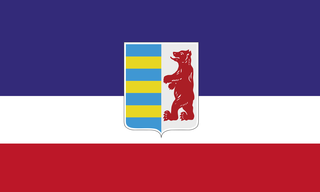 W
WRusyns, or Rusnaks, is an East Slavic ethnic group from the region of Eastern Carpathians in Central Europe. They speak the Rusyn language, an East Slavic language variety sometimes treated as a distinct language and sometimes treated as a dialect of the Ukrainian language, and traditionally adhere to Eastern Christianity. The majority are Eastern Catholics, though a minority of Rusyns still practice Eastern Orthodoxy. Rusyns primarily self-identify as a distinct Slavic people and are recognized as such in Croatia, Hungary, Poland, Romania, Serbia, and Slovakia where they have official minority status, however, some self-identify as Ukrainians.
 W
WUkrainians are an East Slavic ethnic group native to Ukraine. They are the seventh-largest nation in Europe and the second-largest among the East Slavs after the Russians. The Constitution of Ukraine applies the term 'Ukrainians' to all its citizens.
 W
WThe Volga Tatars or simply referred to as Tatars are a Turkic ethnic group native to the Volga-Ural region of Russia. They are subdivided into various subgroups. Volga Tatars are Russia's second-largest ethnicity after the Russians. They compose 53% of the population of Tatarstan and 25% of the population of Bashkortostan. The Volga Tatars are by far the largest group amongst the Tatars.
 W
WThe Volhynians were an East Slavic tribe of the Early Middle Ages and the Principality of Volhynia in 987–1199.
 W
WThe Zaporozhian Cossacks, Zaporozhian Cossack Army, Zaporozhian Host or simply Zaporozhians were Cossacks who lived beyond the Dnieper Rapids, the land also known under the historical term Wild Fields in today's Central Ukraine and Eastern Ukraine. Today much of the territory is flooded by the waters of Kakhovka Reservoir.